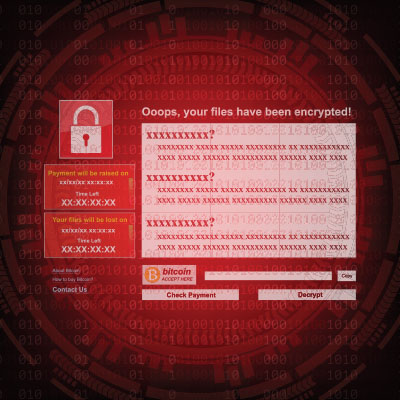We’re always telling people to avoid clicking on suspicious links, but the bad guys are making it harder to tell the difference between a legitimate URL and a suspicious one. We’re going to try to simplify it for you, and have you focus on the placement of a single punctuation mark in a link to tell if it might be safe or dangerous.
Against all odds, remote work has been gradually accepted, but regardless of how your organization does it, it would be imprudent to overlook the obvious cybersecurity risks presented by remote work. Let’s take a look at the essence of zero-trust security and explore why it has evolved into the standard that organizations of all sizes should adhere to.
As business computing goes, ransomware poses the most significant threat. That’s why it’s imperative for organizations to proactively address this menace head-on. Today, we propose a comprehensive three-part strategy that can help your organization sidestep ransomware.
With the holiday season upon us and online shopping surging, instances of scams targeting the popular e-commerce platform Amazon have become increasingly common. The majority of these scams involve impersonation tactics, posing a significant threat to unsuspecting users. With the festive season underway, it’s crucial to be aware of the types of Amazon scams prevalent and take measures to avoid falling victim to them.
While many businesses are actively formulating operational plans and marketing budgets, it’s imperative to acknowledge the significant challenges that could lead to substantial losses and extensive expenses if proactive measures aren’t taken.
Ransomware is a real problem; I mean, a real problem. Not only does it create serious problems for any organization that is victimized by it, it is about to be a completely pervasive problem for everyone. It is extremely important for your organization to take the threat of ransomware seriously by implementing a strategy to keep it from being an issue. Today, we offer a three-pronged approach to doing just that.
The Internet allows online transactions to take place, but they must be properly protected so that hackers and cybercriminals don’t make off with your sensitive data. Here are some simple ways you can ensure that your business is protecting its online transactions.
It’s easy to think of email as something that just works. You open up Outlook or log into Gmail and your mail is there. Most people aren’t even aware of the vast, complex set of systems required for email to even work—and we don’t blame you. It’s extremely complicated. That being said, if nobody is actively managing your email, providing protection for the underlying technology, and making sure that it was and remains configured properly, it’s possible that your email could be working fine while opening you up for unseen threats.
Cybercriminals aren’t looking to play fair against businesses. They don’t care how big or small you are, they don’t care about what services you provide, or what good you offer for the community. You could be a children’s hospital or a single mother selling homemade mittens out of your dining room, you could be a school, an assisted living facility, or a Fortune 500. Either way, your organization is an equally viable target for cybercriminals.
Cybercrime is a concern for businesses of all—and we mean all—sizes, from the small mom-and-pop shop down the road to the multinational enterprises, and it’s a concern for a variety of reasons. Let’s take a look at some of the reasons that these massive businesses worry about cyber incidents and see if there isn’t some common ground.










